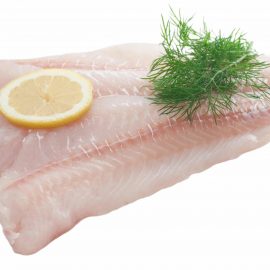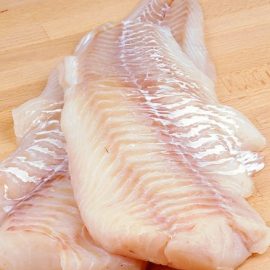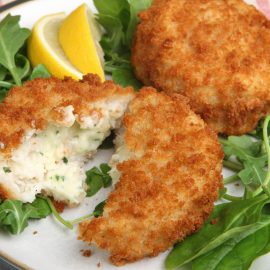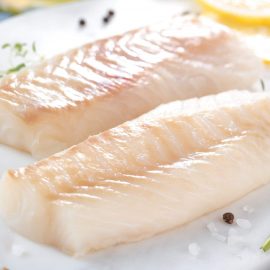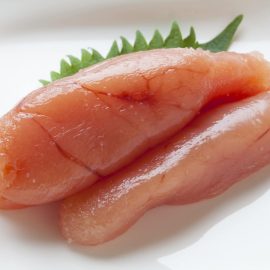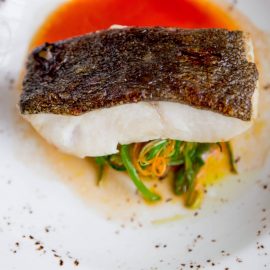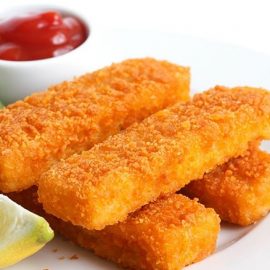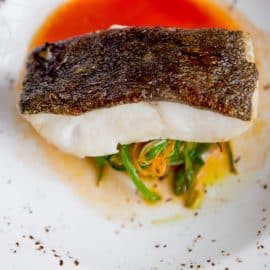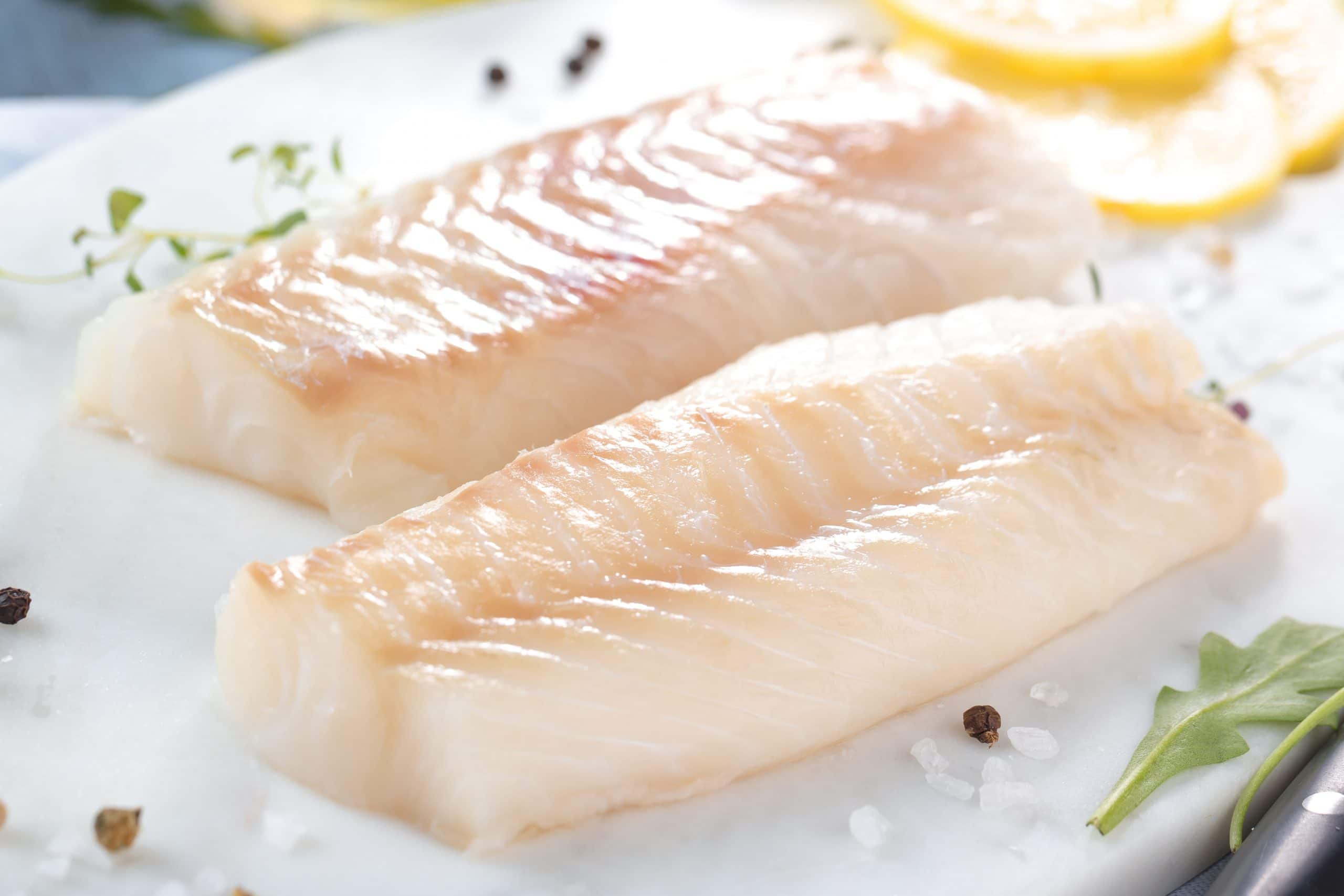
Introduction
Cod, the staple of many a seafood lover’s diet, is an enticing combination of taste and nutrition. Commercial fishing for cod has been a major business in many parts of the world since ancient times when it was considered a delicacy.
Cod has been widely harvested for its meat and oil content since ancient times. Cod oil was used as lamp fuel before petroleum became available and for medicinal purposes.
Recently, Cod fisheries have been developed around the world with varying levels of success depending on region-specific regulations regarding sustainable fishing practices.
Description & Characteristics
Cod, a demersal fish genus Gadus, is a marine fish belonging to the family Gadidae. It is an important food source for many cultures around the world.
Cod has a distinct body shape, with a large head, a chin barbel, and a long thin body that tapers off towards the tail. Its colouration varies from dark greenish-brown to pale grey on its back and silvery white underneath. The maximum length of an adult cod can reach up to 70 cm (28 inches) and weigh up to 16 kg (35 lb).
Cod have three dorsal fins and two anal fins, which are used for swimming and manoeuvring in the water. The body is covered by a thick layer of mucous that helps protect it from parasites and predators. Cod also possess a single long-slender barbule on their lower jaw, which may help them detect food sources in murky waters.
They are carnivorous fish, feeding mainly on smaller fish like herring, sand eel, whiting and mackerel. Their mouths are equipped with sharp teeth, which are used for catching their prey.
Habitat And Distribution of Cod
Cod are widely distributed in cool, temperate waters along the continental shelf and upwelling areas of the Atlantic Ocean, from Newfoundland, Canada, Alaska, to Senegal in Africa. They are also found in the Mediterranean Sea and the Black Sea. In addition, they can be found in North Sea waters, including the North Sea Basin, Kattegat and Skagerrak.
The largest concentrations of cod are typically found on soft seafloor habitats such as mud or sand bottoms. They prefer depths between 30-600 meters but can also be found at depths of up to 1,000 meters. Codfish are known to migrate seasonally.
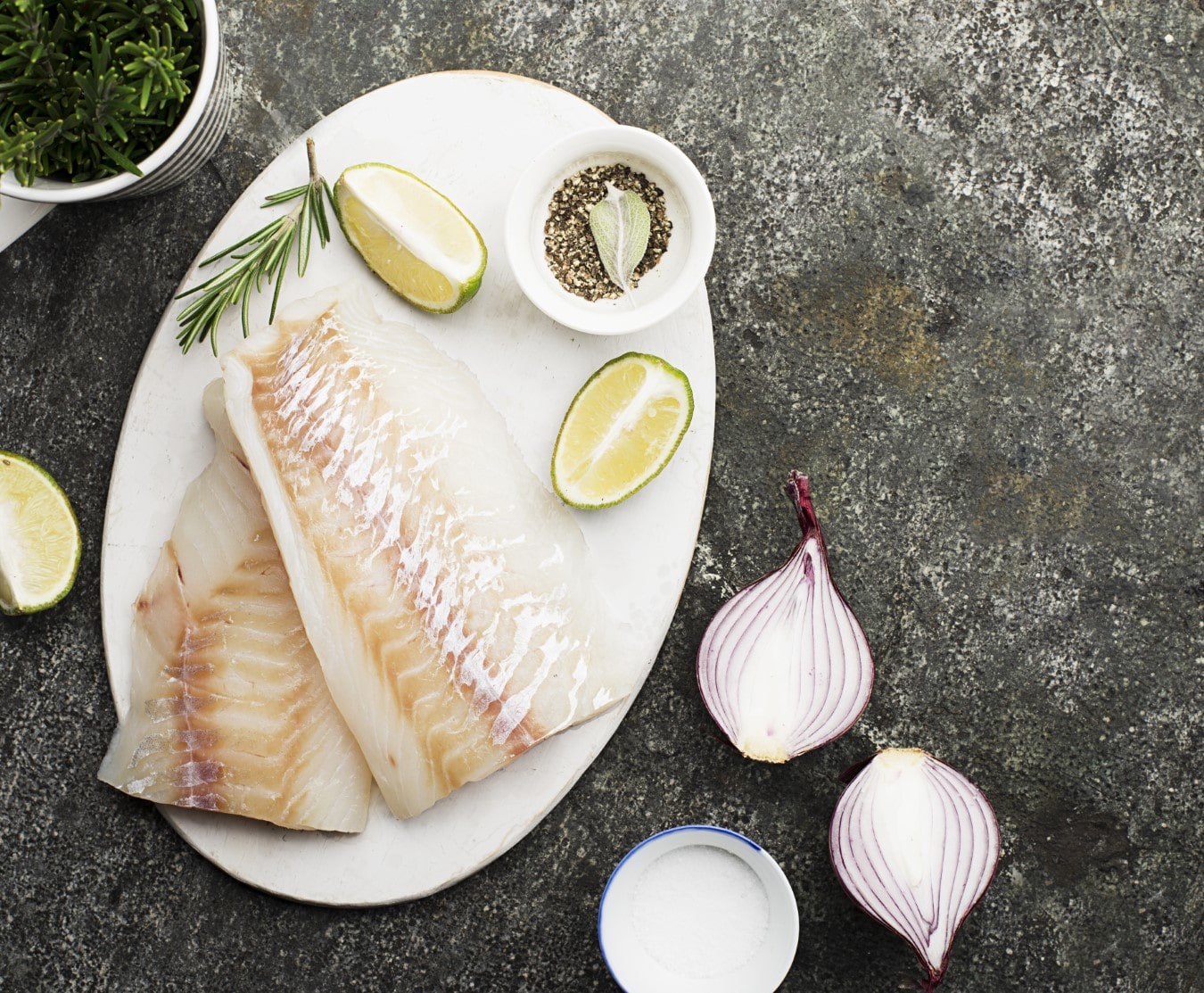
History of Cod
Cod, a long-lived species in the North Atlantic and North Pacific oceans, has a long and varied history. It is believed that cod first appeared in the fossil record around 12 million years ago and has been a staple of human diets for centuries.
The popularity of Cod as a food source throughout history is due to its nutrient-rich flesh, mild taste, and ease of preparation. Cod’s popularity as a food source can be traced back to ancient times when it was an essential part of the Roman diet. In subsequent centuries, cod became a staple of northern European diets during the Middle Ages, with its consumption reaching its peak during the 16th century. During this period, cod was an essential part of British cuisine and was consumed by all classes, from royalty to the working class.
Cod Fisheries
Code fisheries have been a primary source of income and food for many countries for centuries. They employ numerous individuals, contribute to GDPs and support the economies of local communities.
In particular, the fisheries targeting cod are considered one of the world’s most important fisheries. The majority of cod caught is used as a food source worldwide, but some are also processed into other products such as fishmeal and oil.
Cod fisheries vary in size and structure depending on their location. They can range from small family-run operations using traditional fishing methods to large corporations utilising modern technology. Some Cod fisheries are managed by government agencies, while private companies or organisations manage others.
Unregulated Coding has become more common in recent years, leading to overfishing and depletion of local stocks. This has devastating impacts on marine ecosystems and local communities that rely on cod for their livelihoods.
Sustainability
Sustainability is an important aspect of Cod fisheries. Overfishing occurs when too many fish are caught relative to the number that can be replenished, resulting in unsustainable fishing practices and a decline in the cod population.
Fishing regulations, such as catch limits, seasonal closures, and gear restrictions, can help manage these populations and maintain healthy fish stocks. Additionally, aquaculture techniques may be used to supplement wild-caught cod populations and reduce pressure on wild stocks.
Aquaculture is a practice that involves raising fish in captivity for food production. This method is used to increase the amount of cod available for harvest while also providing employment opportunities for local communities.
Cod farms are typically located in remote coastal regions with access to clean water sources. The processes involved in aquaculture can be adapted to suit each region’s environmental conditions and cultural preferences. As well as providing economic benefits for local communities, aquaculture can help ensure sustainable fishing practices by reducing pressure on wild stocks and providing an alternative source of protein.
Life Cycle of Cod
The Cod’s life cycle is compared to a dance, as its intricate movements span the depths of the ocean floor. Spawning occurs in winter or spring and can take place over several weeks. It usually happens at night when water temperatures reach a minimum of 5°C (41°F). During this time, females lay millions of eggs fertilised by the male cods.
After spawning, the eggs drift with the currents for two to three days until they hatch into larvae. The larvae then continue their journey towards coastal zones and estuaries, settling and feeding on plankton until they reach maturity.
As Cod reaches maturity, they migrate away from their birthplaces towards deeper waters throughout the year to feed and spawn. This behaviour has been observed across many species of Cod in different regions of the world.
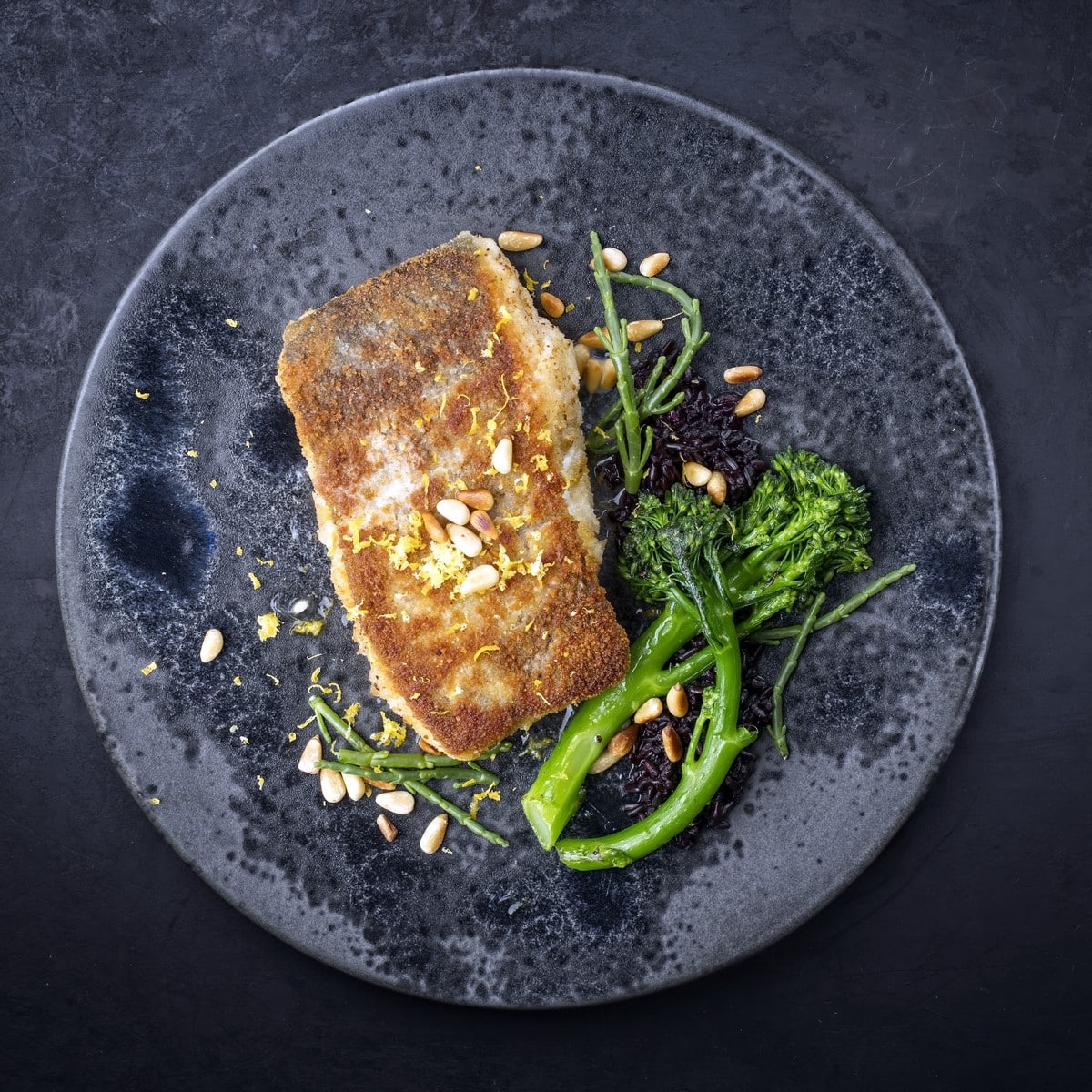
During their migration, cod will seek out areas with plenty of food sources, such as other small fish and crustaceans. They also tend to remain in certain areas for extended periods of favourable conditions, and food is plentiful.
In some parts of their range, such as on Georges Bank off the coast of Massachusetts, cod form large aggregations during spawning season, with adult cod forming very dense schools near coastal areas. These spawning aggregations are essential in maintaining healthy cod populations, allowing for successful reproduction and recruitment into adult stocks.
Cod can live for up to 25 years in their natural habitat and may migrate up to 1,500 kilometres (930 miles) during their lifetime.
Species and Taxonomy
In terms of taxonomy, cod are classified as bony fish within the order of Gadiformes. This species is further divided into three subspecies: Atlantic cod (Gadus morhua morhua), Pacific cod (Gadus morhua macrocephalus), and Greenland cod (Gadus ogac).
Etymology
The etymology of the Cod is believed to be derived from the Old Norwegian word kodr, which refers to a type of fish. In modern-day English, this term has been adapted to Cod. It is also believed that the name was given due to its propensity for being caught in large quantities. The French term for Cod, morue, is believed to have come from the Latin mōrus, meaning ‘mullet’.
Cod’s Diet
The diet of the Cod is varied, offering the species an array of nutritious meals. It typically feeds on smaller fish and crustaceans like shrimp, squid, and clams. Furthermore, it may also feed on plankton, plants, and other types of aquatic organisms.
Cod uses several hunting tactics to gain sustenance from this broad range of prey items. These include pursuit-diving, ambush predation, and barracuda-like mid-water feeding.
To better understand its diet, here are three main aspects worth considering:
- Cod actively hunt for their prey as they travel through the water column searching for food sources.
- With its large mouth full of sharp teeth and denticles, the Cod can effectively tear apart its prey to feed on them.
- The Cod’s diet is mainly composed of small invertebrates such as copepods and krill, which are abundant in their habitat.
By employing their powerful sense organs, such as vision and smell, these fishes can quickly identify potential food sources in their environment that will provide them with adequate nutrition.
The diet of a Cod is not limited to just small invertebrates; they also consume larger prey items such as mackerels and herring when given the opportunity. Overall, a healthy balanced diet helps ensure that the Cod remains fit and healthy throughout its lifetime.
Cod As Food
Cod is a popular seafood item that has been eaten for centuries. It is known for its mild flavour and firm texture, making it an ideal ingredient in various dishes.
As food, Cod can be prepared in many different ways, including baking, frying, and steaming. Because of its versatility and mild taste, it is a popular choice for both home cooks and professional chefs.
Cod has a delicate flavour that pairs well with other ingredients when cooked properly. For instance, when seasoned with herbs and spices or cooked with vegetables or other seafood, the dish’s flavours are enhanced without overpowering the cod.
In addition to its culinary use, Cod is also highly sought after as a sporting catch due to its size and fighting ability. Anglers often target this species because of its strong pull on the line, which makes it an exciting catch. While anglers must abide by laws that protect overfished species like cod in different regions throughout the world, there are still many opportunities to pursue this species if done responsibly.
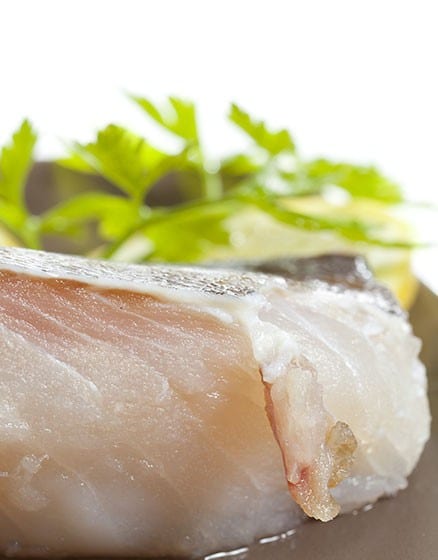
How To Prepare
Cod is a popular fish for cooking, with its white, flaky texture and mild flavour. The most common way to prepare cod is to bake it in the oven. Baking gives the cod a moist texture and allows for an array of flavours.
For example, some recipes call for adding herbs and spices like garlic, thyme, cumin, or paprika to the cod before baking it. This gives the dish an extra layer of flavour while still allowing the taste of the cod to shine through.
Other methods of preparing cod include poaching, steaming, and frying. Poaching is an excellent option as it helps preserve moisture in the fish while still allowing it to get cooked through. Steaming cod is also a perfect way to cook it, as this method helps keep all of its essential vitamins and minerals intact. Frying is another popular option but should be done carefully as overcooking can lead to dry and tasteless results.
TIP: To get the extra flavour out of your cod dish, season generously with salt and pepper before and after cooking. Additionally, adding fresh herbs such as parsley or dill can bring out the fish’s natural taste without overpowering it. With these simple tips, you’ll always have delicious cod dishes on your dinner table!
Best Side Dishes Paired With Cod
This white-fleshed fish, found in saltwater and freshwater habitats, is a favourite for its mild flavour and flaky texture. It can make for an unforgettable meal when served with the right accompaniments.
Below are some of the best side dishes to pair with Cod to bring out the most flavour in your dinner.
To add depth to your meal, make a flavorful sauce like creamy tartar or garlic butter. These sauces can be used both as marinades and to top off cooked cod for an extra zing of flavour. Other great options include adding fresh herbs like thyme or parsley and vegetables like onion and celery.
Consider serving your Cod dish with potatoes or rice as sides that will enhance its flavour. Potatoes can be boiled or mashed before being roasted with garlic and parsley for a crunchy texture. Rice can be cooked on its own or combined with vegetables such as spinach or bell peppers for a heartier side dish. To complete your mains course, add some steamed vegetables like broccoli or green beans to round out the flavours of your meal.
Finally, remember that accompaniments like crusty bread and salads will help bring all the flavours into one harmonious dish. From focaccia and ciabatta to Caesar salad and coleslaw, these side dishes will provide a delicious contrast from the main course while still complementing its unique taste profile.
Popular Cod Recipes
Cod is a type of fish that is highly coveted for its mild flavour and flaky texture. A popular dish in many cultures, cod is the best choice to create a delicious and nutritious meal.
As such, some of the most popular recipes featuring Cod are as follows.
- Cod tacos with spicy lime cream sauce
- Baked lemon garlic parmesan cod
- Grilled miso-glazed black cod
- Classic British fish & chips with tartar sauce
Serve up your delicious cod with lemon wedges or fresh herbs to add zing or creamy mashed potatoes or roasted vegetables for comforting sides – either way, you’ll have a meal fit for royalty! With so many tasty recipes available, it’s no surprise why cod has become an integral part of many global cuisines over time.
Comparison To Other Fish
Cod is a popular seafood choice due to its mild flavour and easy preparation. It is often compared to other species of fish, such as haddock and pollack, which are also popular food choices. While some similarities exist between these fish species, there are notable differences that should be considered when planning meals.
One key difference between Cod and haddock or pollack lies in their respective fat contents. Cod has a higher fat content than either haddock or pollack, giving it a firmer texture and richer flavour. Haddock and pollack have lower fat content, resulting in a lighter taste and flakier texture when cooked.
Another factor to consider is the size of the fish; cod tend to be larger than either haddock or pollack, making them more suitable for dishes that require bigger fillets or chunks of fish. Additionally, Cod provides more omega-3 fatty acids than either haddock or pollack, making it a healthier choice for those looking for more nutritional benefits from their seafood meal.
When deciding between cod, haddock, and pollack for meals, it is essential to consider the differences in taste, texture, size, and nutritional value each species of fish offers. Knowing these factors can help you choose the type of seafood that best fits your needs when meal planning.
Conclusion
Cod is an excellent choice for incorporating seafood into your diet. Its mild flavour makes it approachable even for those unfamiliar with seafood, while its nutritional value provides numerous health benefits. In contrast to its plain appearance, Cod can be savoured with care to reap great rewards.
